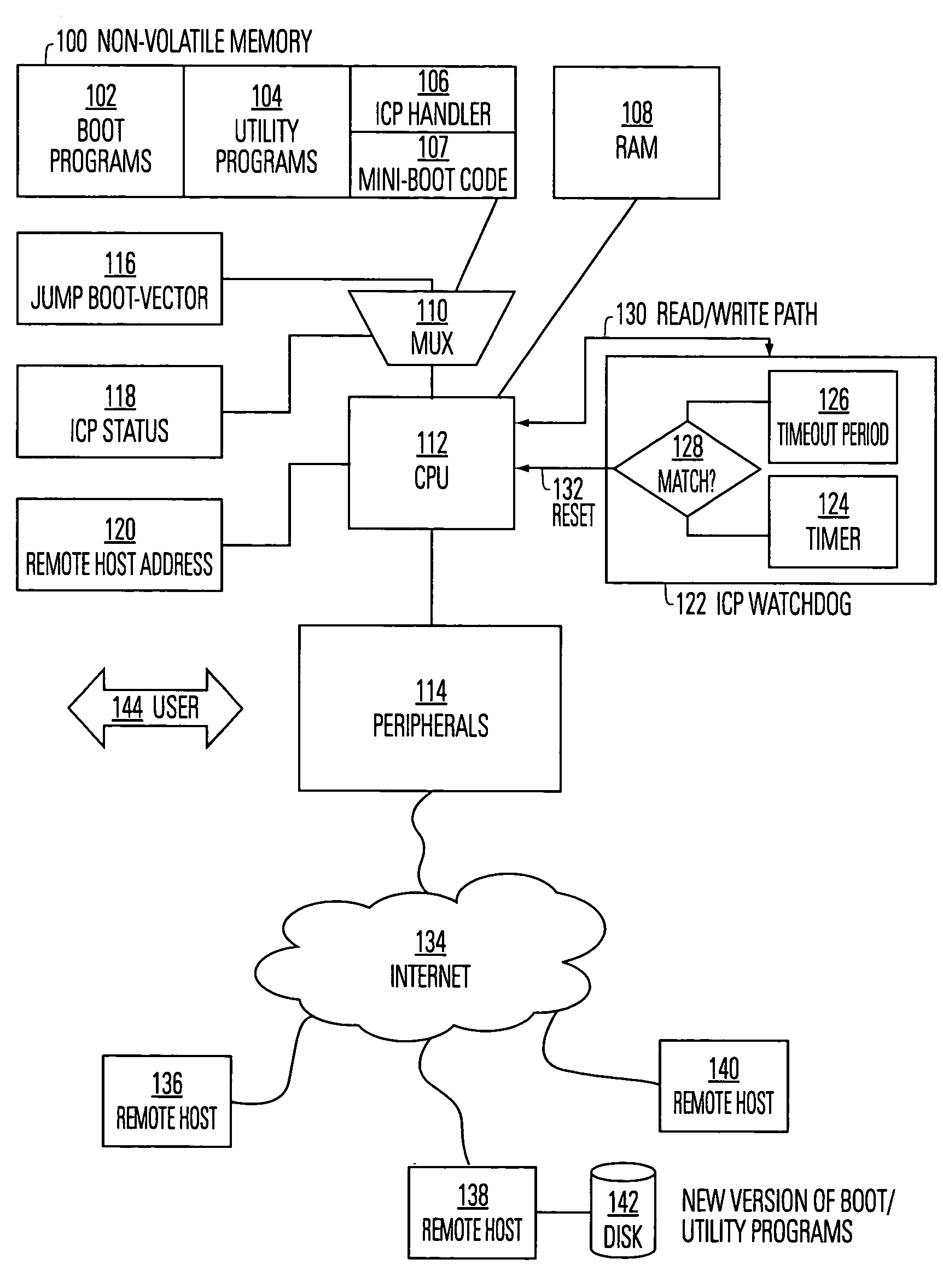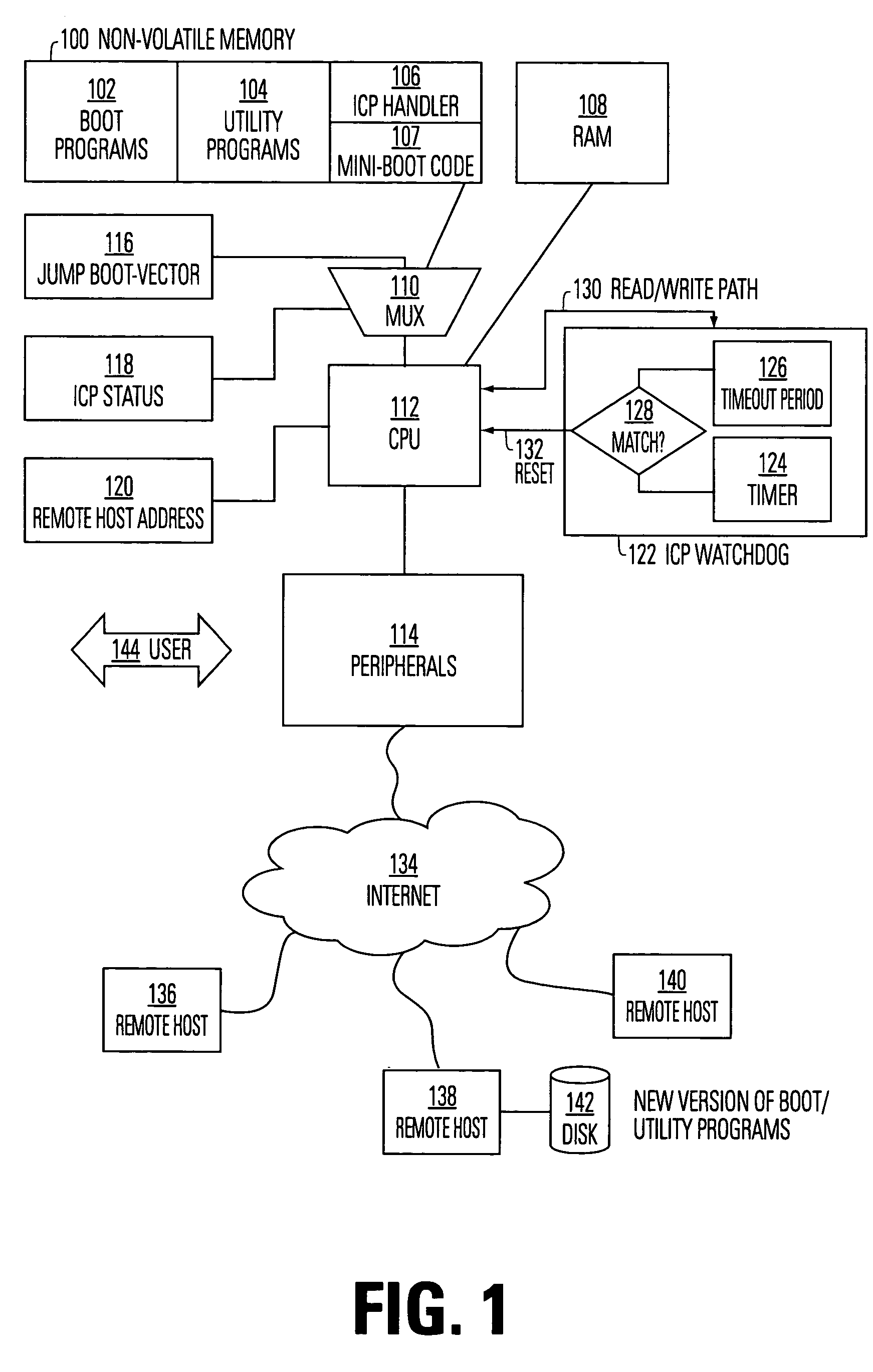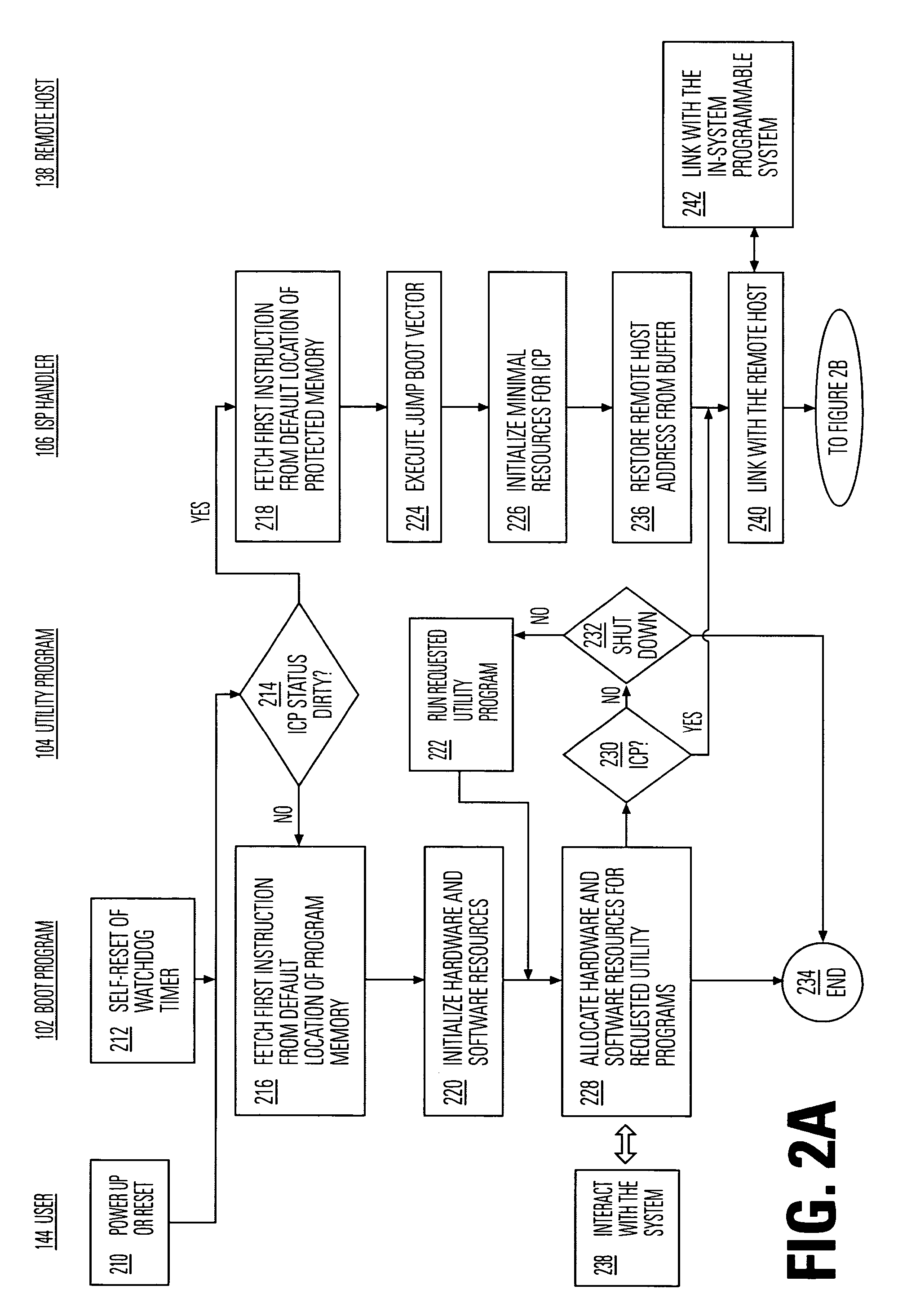Fault-tolerant architecture for in-circuit programming
a fault tolerance and in-circuit programming technology, applied in the field of computer systems, can solve the problems of limited use of the microcontroller to a relatively narrow range of applications, difficult to utilize the icp function in a dynamic communication environment, port may not match well, etc., to achieve the effect of maintaining flexibility in the in-circuit programming process, improving communication protocols, and increasing speed
- Summary
- Abstract
- Description
- Claims
- Application Information
AI Technical Summary
Benefits of technology
Problems solved by technology
Method used
Image
Examples
Embodiment Construction
;© 1996 Macronix International Co., Ltd.;;SFR define.EQUFMCON, 0 × 40 H;Flash Module CONtrolregister.EQUFMTIM, 0 × 41 H;Flash Module TIMingregister;used by s / w to emulate theemulate;the waveform needed forflash operations.EQUdelay1, 0 × fah;Tck = 1 / Fosc (ns);delay1 = (256–2000 / (Tck*12) + 1).EQUdelay2, 01 × 1AH;delay2 = (500000000 / Tck*12 * 65536);Subroutine: Erase full chipERASE:MOVFMCON, #00010010 b;chip eraseMOVFMTIM, #11000000 b;VPP in and CEB is activeLCALLDELAY2 us;delay tVPS or tCES (2 us)MOVFMTIM, #11010000 b;WEB is activeLCALLDELAY1 s;delay tEW (erase time)MOVFMTIM, #11000000 b;disable WEBLCALLDELAY500 ms;delay tER (0.5 s)MOVFMTIM, #00000000 b;clear FMTIMMOVFMCON, #00000000 b;clear FMCONRET;Subroutine: Verify erased byteERASE_VERIFY:MOVFMCON, #00010010 b;verify chip eraseMOVFMTIM, #11000000 b;VPP in, CEB is activeMOVDPTR, #00 H;AddressLCALLDELAY2 us;delay tMS (2 us)MOVFMTIM, #11100000 b;OEB is activeMOVR1, #00 hMOVR0, #00 HNOPNOPLOOP_E:;MOVXA,@DPTR;read FlashCJNEA,#0 × FFH, E...
PUM
 Login to View More
Login to View More Abstract
Description
Claims
Application Information
 Login to View More
Login to View More - R&D
- Intellectual Property
- Life Sciences
- Materials
- Tech Scout
- Unparalleled Data Quality
- Higher Quality Content
- 60% Fewer Hallucinations
Browse by: Latest US Patents, China's latest patents, Technical Efficacy Thesaurus, Application Domain, Technology Topic, Popular Technical Reports.
© 2025 PatSnap. All rights reserved.Legal|Privacy policy|Modern Slavery Act Transparency Statement|Sitemap|About US| Contact US: help@patsnap.com



